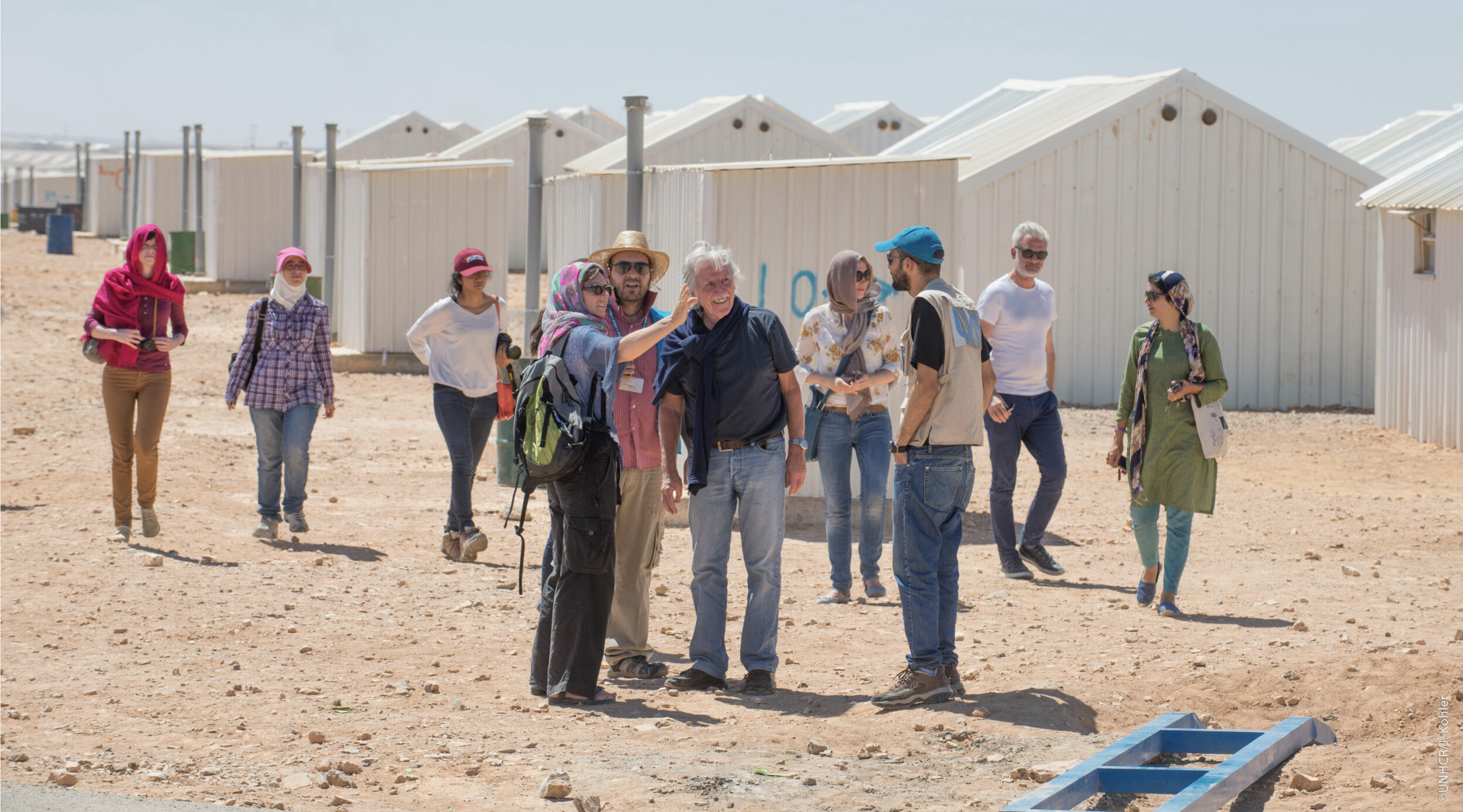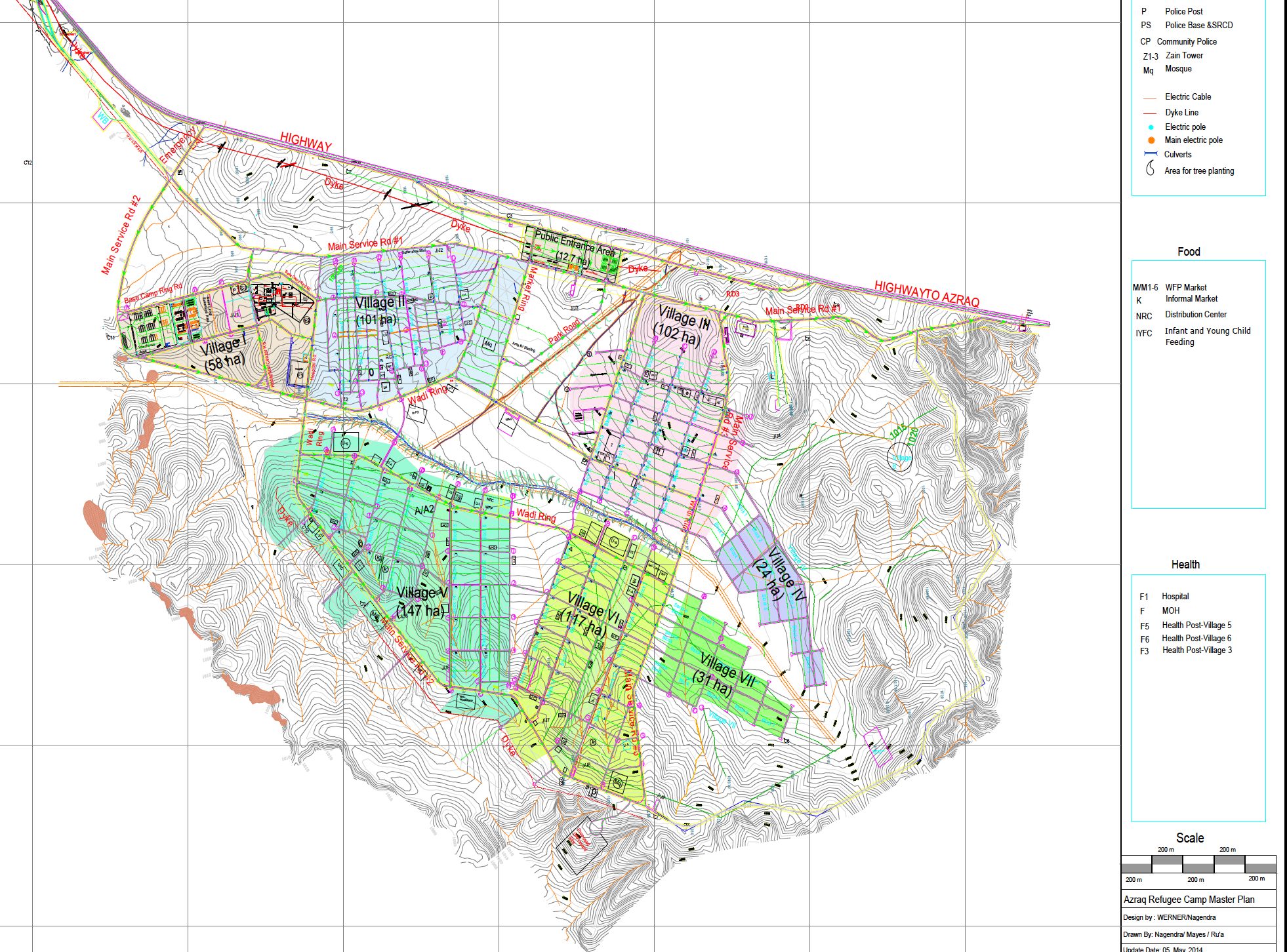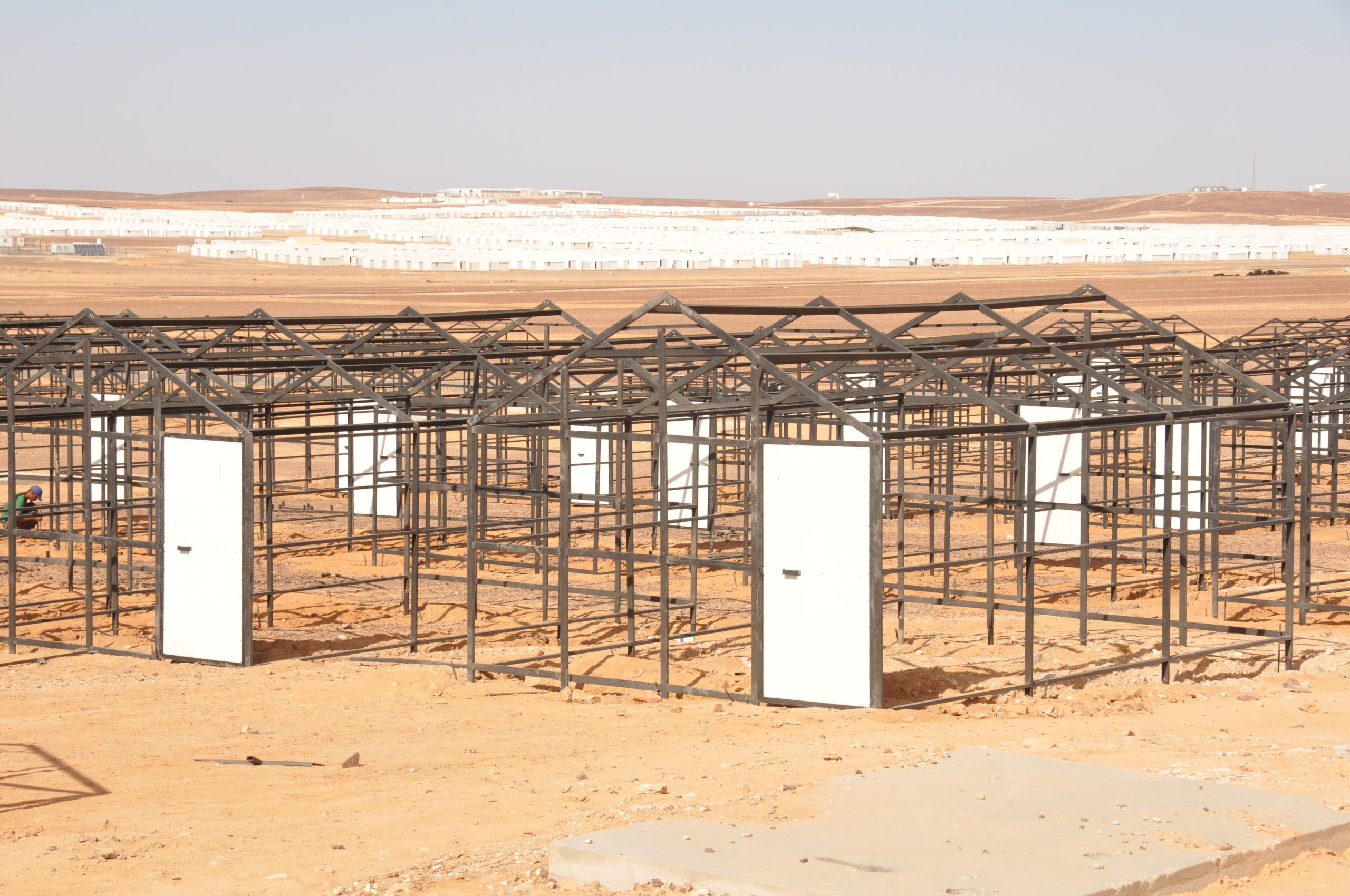‚One of the Best Refugee Camps in the World‘

Werner Schellenberg (with blue t-shirt) in al Azraq Refugee Camp, Jordan 2014 –
foto © UNHCR J. Kohler
by gerhard and ru’a
Werner Schellenberg as Senior Shelter Advisor to the UNHCR in Jordan was in charge of designing the second largest camp for Syrian refugees in al Azraq. As Shelter Sector Lead, responsible for coordinating the Shelter Sector input for Jordan’s Refugee Response Planning, he was responsible for the formulation of objectives, outputs, indicators, activities & budget requirements for a projected refugee population of 200.000 refugees.
At the occation of the opening of Azraq Camp in 2014 the Huffington Post gave credit to its good design:
Despite its harsh location, Azraq was built mindful of lessons learned from Zaatari, according to Jordanian officials and aid workers who touted it as one of the best organized camps. „On the one hand, it looks like a continuing scenario of hopelessness, in the absence of any diplomatic solution to the crisis,“ said Jack Byrne of the International Rescue Committee, one of the groups overseeing the process. „On the other hand, it’s been done very well by Jordanian authorities and urban planners to make it as hospitable as possible.“ Azraq has individual shelters with sloped roofs, not flammable tents, and more bathrooms and shared kitchens, as well as a supermarket where Syrians can buy products with rechargeable aid cards instead of lining up for bland, dry donated food. There are medical clinics, schools and parks. The roads are paved. …
„What you see when driving around is possibly one of the best refugee camps in the world,“ said Andrew Harper, the U.N. refugee agency’s representative to Jordan. Source: Huffington Post, 30th April 2014

Master Plan for Azraq 2014 © UNHCR Schellenberg/Nagendra/Mayes/Ru’a
It was for Azraq’s desert camp location that Schellenberg developed a new Approach to camp planning which he later generalized to UNHCR’s Master Plan Approach.
The camp is divided into smaller units, which allowes the evolution of a sense of community. Each unit of about 10,000 to 15,000 people has its own community center, health clinic, police office, park, and playgrounds and sports fields.
… to be conitnued

foto © Werner Schellenberg
Werner Schellenberg signed responsible for the design of a prototype transitional/semi-permanent shelter – the so-called T-Shelter. This project is thoroughly described by his Jordanian UNHCR colleague Ru’a al Abweh on her Website.
In 2016 Werner Schellenberg was invited by the German Assiciation of Architects in Bavaria (BDA Bayern) and the Federal Foundation for Building Culture (Bundesstiftung Baukultur) to Munich to take part in the Workshop Flucht nach vorne where he spoke about his 30 year long experience with the coodination of refugee camps world wide. His presentation was recorded by the Foundation – it is in German and can be seen on Vimeo.